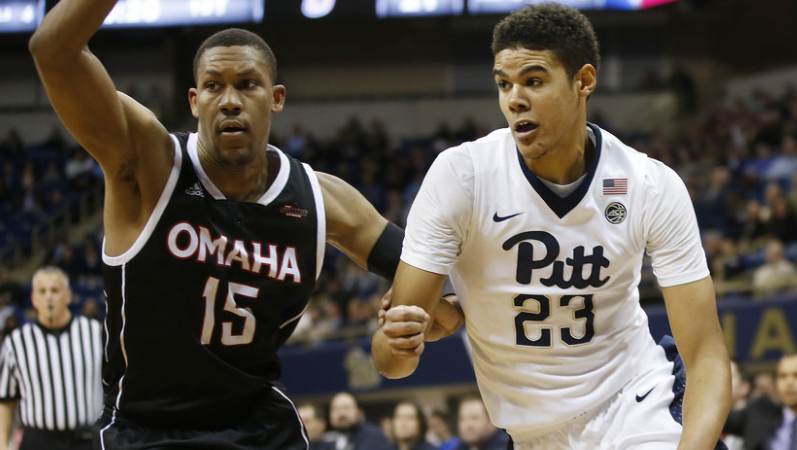Even casual ACC basketball fans are aware of Pittsburgh’s dependence on two players: Jamel Artis and Michael Young. But those two have not necessarily been on an island when it comes to offensive production this season — a third Panther has emerged. It has not been reflected in the win-loss column, but junior Cam Johnson has turned into a real player.
After playing fewer than 500 minutes across his first two seasons in blue and gold, Johnson has developed as not only one of the most improved players in the conference, but also one of the ACC’s deadliest shooters. Johnson played in 32 games a season ago, making one start, which came against North Carolina in the ACC Tournament. He averaged 4.8 points per game.
Those days as a marginal role player are over.
Now, thrust into a larger role as a junior, Johnson has seriously upped his game: 12.2 PPG, 2.3 APG (he is more than just a shooter) and 4.6 RPG. Johnson ranks third on Pitt’s roster in minutes played and a variety of other counting stats — almost exclusively behind Young and Artis. No real surprise there.
In Pitt’s last two games — a win over Syracuse and a collapsing loss to Virginia Tech — Johnson scored a combined 39 points on just 19 field-goal attempts. He shot just four total free throws against the Orange and Hokies, too.
It is nearly impossible to score better than two points per field-goal attempt while only shooting four free throws. The only way something like this is possible is if said player is razor-sharp from beyond the arc.
Johnson was exactly that; he connected on 11 of 16 three-pointers against Syracuse and Virginia Tech, which is more of the same for the junior.
Johnson is the archetypal 3-and-D wing: low usage (16.2 percent, according to KenPom.com), capable of defending multiple positions and — most importantly — a knockdown three-point artist. Of ACC players with at least 50 catch-and-shoot possessions this season, Johnson ranks 17th in points per possession (1.24) and 18th in field-goal percentage (41.5 percent). His 65 three-pointers are a team-high for Pitt this season.
True shooting rate is a statistic that factors in field goals, three-point field goals and free throws as a means to determine a more holistic representation of how efficient a shooter truly is. Field-goal percentage tells only one portion of a story; it is a snapshot that cannot include every detail. True shooting percentage is not perfect, but it is a more complete metric. Johnson has shot a respectable 45.4 percent from the field, but let’s draw this out further: For the season he has a true shooting rate of 62.5 percent, which ranks inside the top 100 nationally, according to KenPom.
The transition game has been a favorite of Johnson’s this season, too. Per Synergy, he has connected on 61 percent of his transition attempts. While on the run, Johnson has been especially accurate filling the wing alongside Young and Artis. He has shot a combined 59.3 percent from the right and left wings in transition, according to Synergy, and scored 49 points on 32 possessions (1.53 points per possessions).
With the departures of Young and Artis on the horizon, a lot will likely fall on the shoulders of Johnson next season. His scoring and rebounding numbers should rise, but his efficiency metrics could be in for a rude awakening.
Regardless, Johnson’s improvement is worthy of praise, and his skill set is valued in the professional ranks. The future could be even brighter for Johnson.

















